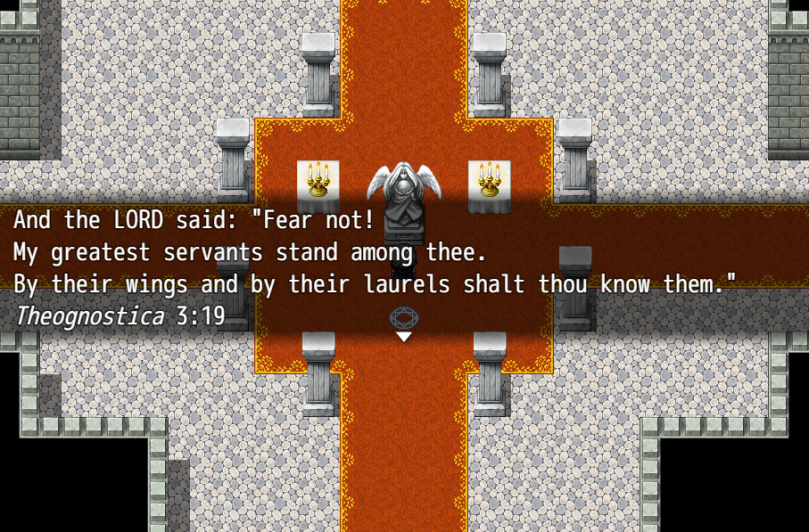A side project I’m bringing to the front burner to try to get done, Crown of Thorns is a darkly atmospheric fantasy adventure game.
Players assume the role of Brunhilde, a mysterious and silent knight with an unknown mission at an empty castle. Using magical portals, she goes back and forth between two versions of the castle: one pristine, the other decrepit and ruined, but both mysteriously deserted. A foreboding presence pervades the ruined castle, causing strange distortions in the world.
Brunhilde must overcome various obstacles to clear the distortions, break through magical seals, and eventually reach the center of the castle, and its mystery.
The primary gameplay of Crown of Thorns is exploration and puzzles, where players must use both versions of the castle to overcome obstacles, in the vein of light world / dark world or past / present type puzzles seen in Zelda games and similar works. There is no combat in Crown of Thorns, just mystery and exploration.

There is a lot of religious iconography in Crown of Thorns (in case the name didn’t tip you off). Throughout the world, you will find (fictional) scriptural passages. These texts tell of a religion that worships angelic figures called Graces, who brought divine gifts and moral guidance to humankind. To you, their words serve as a backdrop to the slowly unraveling narrative, and as riddles that tell you how to get past various obstacles in the game.
More on this project as it comes along.
-Louis



